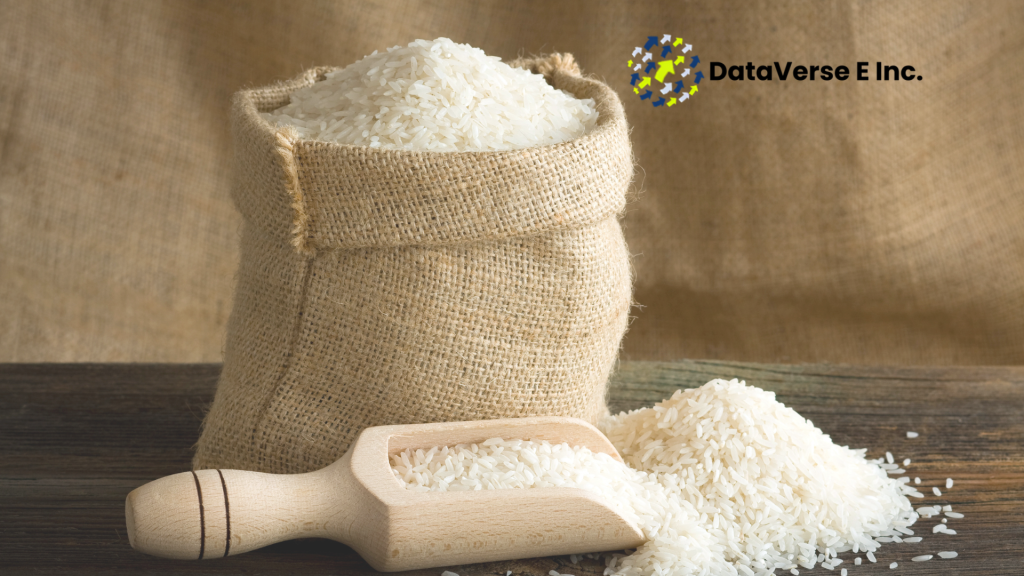Introduction to International Trade Shows
International trade shows, often referred to as trade exhibitions or expos, are organized events where businesses from various sectors come together to showcase their products, services, and innovations.
These events serve as a significant platform for manufacturers, suppliers, and exporters to interact with potential buyers, distributors, and partners across the globe.
Participating in trade shows provides an opportunity for Indian exporters to gain visibility in the international marketplace, enabling them to exhibit their offerings to a targeted audience.
The significance of international trade shows is multifaceted. Firstly, they facilitate networking among businesses by bringing together industry professionals who might not otherwise connect with each other.
For Indian exporters, establishing relationships with global stakeholders can lead to valuable collaborations and partnerships, fostering growth and expansion into new markets.
Secondly, these events are an avenue for information exchange, allowing participants to stay updated on industry trends, consumer preferences, and competitive analysis.
Knowledge gained at these trade shows can be instrumental in informing business strategy and improving export practices.
Moreover, international trade shows present a unique platform for conducting direct business transactions.
Attendees can engage in face-to-face discussions, conduct negotiations, and even close deals on the spot.
For Indian exporters, the ability to establish credibility and build trust through personal interactions can significantly enhance their chances of successfully exporting goods abroad.
As we approach 2024, the need to leverage these trade shows becomes increasingly pertinent. The global business landscape continues to evolve, driven by advancements in technology, changes in consumer behavior, and shifts in trade policies. Understanding and adapting to these changes via international trade shows could be crucial for Indian exporters aiming to thrive in a competitive environment.
Identifying Relevant Trade Shows
For Indian exporters aiming to expand their reach in international markets, identifying the right trade shows is a crucial step in maximizing export potential. The selection process should start with a clear understanding of target markets; this requires thorough market research to determine which regions and sectors present the best opportunity for export from India. Understanding demographic trends, economic conditions, and consumer behavior in these markets will help in selecting trade shows that attract the desired audience.
Product compatibility is another essential factor to consider. Exporters should evaluate whether their products align with the themes and focus of the trade show. This alignment ensures that the products showcased resonate with attendees and increases the likelihood of establishing valuable business connections. Furthermore, analyzing previous attendance statistics can provide insights into the quality and number of attendees, helping exporters assess the potential for network building and sales opportunities.
Additionally, it is important to consider the specific themes of each event, as many trade shows are organized around particular industries or trends. Exporters should choose exhibitions that spotlight their sector to effectively showcase their products to attendees who are specifically interested in that niche. Resources such as trade associations, industry publications, and dedicated event platforms can offer valuable information on upcoming trade shows and help exporters refine their choices based on historical data and market analysis.
In conclusion, by leveraging the appropriate resources and focusing on key criteria such as target markets, product compatibility, past attendance statistics, and event themes, Indian exporters can efficiently identify relevant trade shows that align with their export objectives. This strategic approach will ultimately enhance their opportunities to penetrate international markets successfully.
Preparing for the Trade Show
Participating in a trade show is an essential step for companies looking to successfully export from India. To ensure that your participation is beneficial, it is critical to prepare adequately.
The first step involves setting clear and measurable goals. Companies should define what they want to achieve, whether it be generating leads, engaging with potential clients, or showcasing new products.
These objectives will guide all other preparations and help in evaluating the success of the trade show.
Once goals are established, designing an attractive booth becomes a priority. The booth should reflect the brand identity and appeal to the target audience.
This involves choosing appropriate colors, visuals, and layout that resonate with potential clients. Effective use of space is essential; a well-organized booth attracts more visitors and facilitates product promotion.
Creating effective marketing collateral is also crucial for maximizing impact at the trade show. Brochures, flyers, and business cards should be designed with clear and concise information about your offerings.
It is advisable to incorporate details on how your products or services can meet the needs of international buyers, particularly within different cultural contexts. Additionally, training staff who will engage with visitors is paramount.
They should be knowledgeable about the products and skilled in communication to converse effectively with potential clients.
Enabling staff to answer questions or discuss partnership opportunities will significantly enhance the interaction quality.Lastly, planning for logistics is indispensable.
This includes understanding shipping requirements for products, determining the timelines for transporting materials, and arranging for booth setup on-site.
It’s also wise to consider potential customs regulations related to export from India to ensure compliance.
By effectively addressing these areas, companies can maximize their trade show experience, fostering future opportunities in international markets.
Maximizing Networking Opportunities
International trade shows present a unique platform for businesses engaged in export from India, offering significant networking opportunities that can lead to fruitful relationships and successful partnerships.
A key strategy for maximizing these opportunities is to approach networking with a clear objective.
Before attending a trade show, it is beneficial to research the exhibitors and attendees to identify potential partners, distributors, and clients. Creating a targeted list will help in making intentional connections rather than relying on chance encounters.
Effective networking is not only about meeting new people but also about building and nurturing relationships.
When interacting with other exhibitors and attendees, it is essential to engage in meaningful conversations that go beyond small talk.
Sharing insights about your products or services, discussing common challenges, and exploring potential synergies can lead to stronger connections.
Furthermore, in a competitive landscape of export from India, showcasing your unique value proposition can make your brand more memorable to others.
Modern networking also involves leveraging social media platforms. Prior to the event, consider promoting your participation on social channels, which can help to increase your visibility and attract interest.
During the trade show, live tweeting or sharing updates on platforms like LinkedIn can engage your audience and keep your brand at the forefront of discussions.
Connecting with new contacts on social media after the event ensures that the relationship continues beyond the trade show floor.
Finally, follow-up practices post-event are crucial for converting leads into actual sales. Sending personalized emails or messages thanking your new contacts and expressing your interest in exploring potential collaboration can lay the groundwork for future deals.
Consistently maintaining communication reinforces the relationship and allows for the transition from acquaintances to business partners.
By strategically maximizing networking opportunities, businesses can significantly enhance their export from India and expand their reach in international markets.
Engaging with International Audiences
Effectively engaging with diverse international audiences is vital for exporters from India looking to expand their reach in global markets.
One of the primary considerations in this context is understanding cultural nuances and practices specific to each target market.
Demonstrating respect and awareness of local traditions not only enhances the rapport but also creates a positive image of Indian exports.
Researching the cultural attributes of the audience will allow exporters to tailor their presentations and marketing strategies accordingly.
Language barriers can also pose significant challenges when exporting from India. While English is commonly used in international business, relying solely on it can hinder effective communication.
To bridge this gap, exporters should consider employing multilingual team members or interpreters who can facilitate conversations.
Additionally, providing translated materials can improve accessibility and reception of the products being showcased.
Understanding market trends across different regions is equally essential.
Exporters should remain informed about economic conditions, consumer preferences, and competitive landscapes that influence demand for their products.
Tailoring presentations to incorporate relevant data and insights about the local market can significantly enhance engagement with potential buyers.
Utilizing real-time market research and analytics tools can support exporters in identifying trends and preferences across international audiences.
Best practices for presentations and product demonstrations should focus on clarity and visual appeal. Engaging visuals, interactive elements, and concise messaging contribute to a memorable experience for international attendees.
Product demonstrations should emphasize unique features and benefits while positioning them within the context of local market needs.
Adapting product showcases to align with the preferences and expectations of the audience will further bolster the appeal of Indian exports on a global platform.
Leveraging Technology for Trade Show Success
In today’s rapidly evolving business landscape, leveraging technology becomes paramount for Indian exporters seeking to make an impactful presence in international trade shows.
As the demand for innovative solutions grows, technologies such as virtual reality, mobile applications, and data analytics are transforming the way exporters engage with potential buyers and partners.
One of the outstanding advancements in trade show participation is the use of virtual reality (VR) to create immersive product displays.
VR allows exporters from India to showcase their products in an interactive manner that captivates audiences, transcending geographical limitations.
Potential clients can engage with 3D representations of products, viewing them as if they were physically present.
This innovative approach not only enhances the overall experience but also helps exporters effectively convey complex features and benefits of their offerings.
Moreover, mobile applications play a crucial role in facilitating real-time communication during these trade shows.
By utilizing dedicated apps, Indian exporters can communicate seamlessly with attendees, organize schedules, and access vital information on-the-go.
This improved accessibility aids in fostering connections and ensuring timely follow-ups, potentially converting interactions into future business relationships.
The instantaneous nature of mobile technology also enables exporters to be more responsive to inquiries, enhancing their reputation as proactive partners.
Data analytics further enhances the ability of Indian exporters to measure the effectiveness of their participation in trade shows.
Through detailed analysis of attendance patterns, engagement levels, and feedback, exporters can refine their strategy for future events, ensuring a more targeted approach.
Additionally, a strong online presence through websites and social media platforms complements physical participation.
By creating an online ecosystem, exporters can reach a wider audience, promote their products, and engage with potential customers beyond the confines of the trade show floor.
Post-Trade Show Follow-Up Strategies
Following an international trade show, effectively engaging with potential leads is vital for maximizing the benefits of your participation and ensuring a robust export from India.
Initial interest is often generated during the event, but the onus falls on exporters to maintain momentum through strategic post-show follow-up initiatives.

One of the most effective methods of outreach is via targeted email marketing.
After compiling a list of contacts gathered at the trade show, it is essential to segment these leads according to their specific interests or queries.
Crafting personalized email communication increases engagement rates significantly.
A follow-up email should thank the recipient for their time, recap key points discussed during the interaction, and include relevant resources or information tailored to their expressed needs.
This not only demonstrates attentiveness but also reinforces your brand’s commitment to providing value.
Beyond email communication, scheduling personalized follow-up meetings can be beneficial. Using calendars that allow easy booking can streamline this process, making it more likely for leads to engage further.
During these meetings, it is crucial to evaluate the initial interest expressed at the trade show and address any questions or concerns the potential customer might have.
This is also an excellent opportunity to discuss how your products or services can address their specific needs, enhancing the likelihood of securing an export deal from India.
In addition to follow-up communication, evaluating the return on investment (ROI) from the trade show is essential for informing future strategies.
This might include analyzing the number of leads converted, assessing the overall reach during the event, and gathering feedback on your trade show presentation.
By understanding what worked and what didn’t, businesses can adjust their approach for subsequent trade shows, ensuring a more effective export strategy moving forward.
Successful Case Studies of Indian Exporters
India’s vibrant export landscape is illustrated through numerous case studies of exporters who have effectively leveraged international trade shows to enhance their global presence.
One prominent example is a leading textiles exporter from Mumbai, which participated in the International Apparel Trade Fair in Berlin.
This company capitalized on the trade fair’s platform to showcase its sustainable fabric lines, attracting significant attention from European buyers.
With well-prepared marketing materials and engaging presentations, they succeeded in securing contracts that increased their European market share by over 30% within a year.
Another noteworthy case involves a Bangalore-based manufacturer specializing in electronics. This company took part in the Mobile World Congress in Barcelona.
They faced initial challenges, including stiff competition and high costs associated with showcasing their products.
However, by meticulously studying the event’s attendee demographics and tailoring their pitch to address specific market needs, they not only enhanced brand visibility but also established vital connections with key international retailers.
This strategic approach resulted in a remarkable 40% rise in exports within the subsequent year, highlighting the concerted efforts put into optimizing their trade show experience.
A case from the food processing sector also exemplifies effective utilization of trade shows. An exporter from Punjab focused on organic food products showcased their offerings at the SIAL Paris exhibition.
They utilized innovative sampling strategies that successfully captured the interest of global food distributors.
By sharing success stories and culinary applications of their products, they seamlessly merged marketing with education, which led to signing multiple export agreements that propelled their sales figures significantly.
These examples not only underline the importance of strategic planning but also showcase the tangible success that can stem from participation in international trade shows.
Such insights can serve as invaluable resources for businesses looking to export from India and expand their reach into global markets.
Future Trends in International Trade Shows
As we move into 2024, the landscape of international trade shows is evolving rapidly, reflecting a range of emerging trends that exporters must recognize to remain competitive.
One prominent trend is the rise of hybrid events, which combine in-person and virtual experiences.
These formats not only broaden participation by allowing global audiences to engage remotely but also provide exhibitors an opportunity to reach potential clients who may not travel due to budget constraints or other limitations.
This shift allows exporters from India to tap into broader markets without the physical barriers traditionally associated with trade shows.
Sustainability is becoming a significant consideration in the planning and execution of trade shows.
Exhibitors are increasingly expected to adopt eco-friendly practices, from the materials used in booth construction to the overall waste management strategies implemented during events.
For exporters operating out of India, aligning with sustainability objectives can enhance brand reputation and appeal to environmentally conscious consumers and businesses, creating additional opportunities in international markets.
Another vital aspect of evolving trade shows involves the shifting preferences of attendees. Today’s visitors are looking for more interactive and engaging experiences.
This shift emphasizes the need for exhibitors to create immersive environments and demonstrations that go beyond traditional display methods.
The use of augmented and virtual reality offers exporters in India the opportunity to present their products innovatively, allowing potential clients to experience offerings in a more compelling manner.
Furthermore, the integration of newer technologies such as AI-driven data analytics can assist exhibitors in optimizing their approaches.
By analyzing attendee behavior and preferences, exporters can tailor their presentations effectively, ensuring they resonate with their target audience.
Keeping abreast of these changes will enable Indian exporters to maximize their presence and impact at international trade shows in 2024 and beyond.






No comment yet, add your voice below!